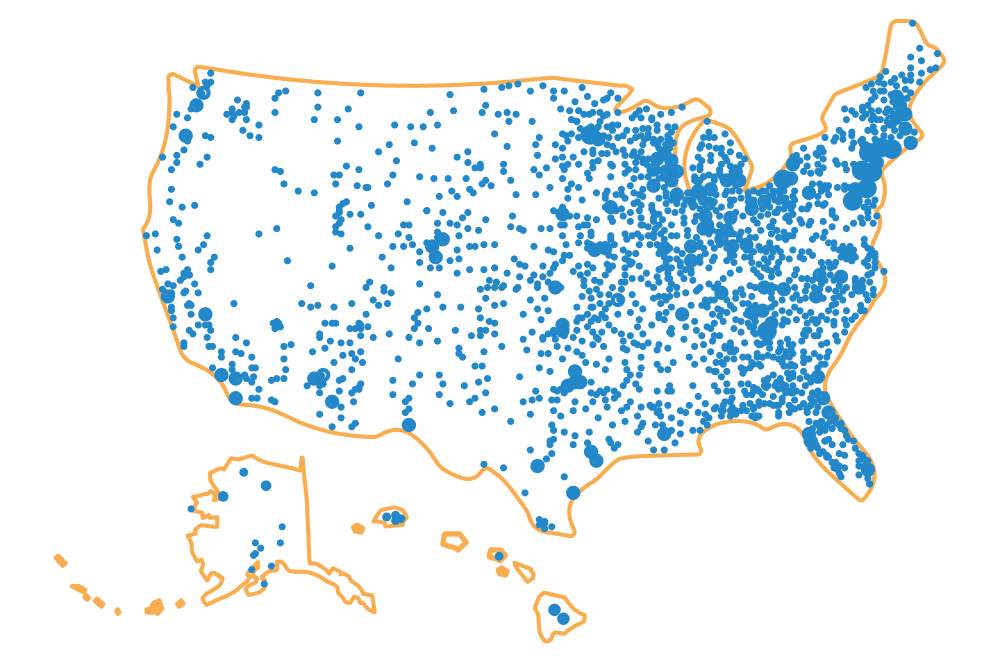May 29 (5/29) is known as 529 Day in the college saving industry to highlight the importance of 529s to help families achieve their education savings goals. To learn to how much you know about these tax-free college savings plans, Ohio’s 529 Plan, CollegeAdvantage, has five true-or-false questions for you to answer. You may learn something new about these higher education savings plans!
529 plans are only for four-year colleges. FALSE
There are many ways, and places, your 529 plan can be used after your child graduates high schools. If the school accepts federal financial aid, which means it has a Federal School Code, then your 529 plan can be used there. Basically, you can use your account almost anywhere you’re comfortable sending both your student and your money.
This list include four-year colleges and universities, two-year community colleges, trade or vocational schools, graduate school, apprenticeships, and certificate programs nationwide.
529s can also be used to pay K-12 tuition up to $10,000 per student, per year, for enrollment at public, private, or religious elementary or secondary school. If there are multiple accounts for a student, the combined 529 distributions to pay for their K-12 tuition is limited to $10,000 per year. Consult your qualified tax advisor for specific information.
Saving in a 529 plan is tax-free. TRUE
There are many tax benefits for saving in a 529 plan!
First, all earnings are tax-free so every dollar saved and every dollar earned through interest and compound interest is all yours to cover college costs.
Second, withdrawals for qualified higher education expenses are also tax-free. These expenditures are usually the mandatory costs to attend the program.
Third, as an Ohio resident who saves in Ohio’s 529 Plan, you can deduct up to $4,000 per year, per beneficiary, from your state income taxes for matching contributions to your Ohio 529, with unlimited carry forward. Unlimited carry forward means that $4,000 is not an annual contribution cap. As an Ohioan, if you contribute more than $4,000 in one year, in future years you can continue to subtract $4,000 per year, per beneficiary, from your State of Ohio taxable income until all the 529 contributions are deducted.
You’re limited on what a 529 can pay for. FALSE
Your savings in an Ohio 529 account is quite flexible in paying for qualified higher education expenses tax-free. And for what you can pay with your 529? Generally, all the required costs to attend that higher education institution:
- Tuition.
- Room and board during any academic period in which the 529 beneficiary is enrolled for at least half of the full-time academic workload. Room and board costs can also include off-campus residency (whether a rental or a Greek-affiliated residence) and groceries (non-taxable items only), provided these costs are equal or less than the school’s room and board allowances.
- Mandatory fees.
- Computer equipment and related technology as well as internet services.
- Books, supplies and equipment related to enrollment and class schedule.
- Apprenticeships costs like fees, textbooks, supplies, and equipment, including required trade tools. The apprenticeship program must be registered with the Secretary of Labor’s National Apprenticeships Act in order to use a 529 withdrawal.
- Any student loan that qualifies for federal student loan income tax deduction to now be paid with a 529 distribution. There is a $10,000 lifetime limit per 529 beneficiary. However, an additional $10,000 can be used to repay qualified student loans for each of the beneficiary’s siblings.
- K-12 tuition up to $10,000 per student, per year, for enrollment at public, private, or religious elementary or secondary school.
If my child doesn’t go to college, I will lose the money saved in my 529. FALSE
You always have access to the funds saved in your 529 account and you always have options on how to use them.
First, there is no deadline for when you must use a 529 plan. So, you can wait to see what decision your child makes about their education after high school. And again, if your child isn’t interested in going to a four-year program, 529 accounts can pay for costs at community colleges or technical schools, trade or vocational schools, certificate programs, and apprenticeships.
Second, you can transfer the 529 account to any member of the family—anyone who is related by blood, marriage or adoption. Therefore, the money you set aside for your child’s higher education can be transferred to a sibling, a cousin, future grandchildren, or even yourself.
Third, starting in 2024, 529 funds can be rolled over to a Roth IRA for the same beneficiary to jump-start their retirement savings. There are still many clarifications and operational issues to be resolved relating to this change, additional information will be provided once available.
Lastly, you can always take a non-qualified withdrawal, if necessary. Only the earnings portion of the withdrawal will be taxed at the federal, state, and local level. All 529 contributions are post-tax dollars so it will not be taxed again Like other tax-advantaged saving programs (like a 401k), there will be a 10% federal tax penalty assessed for withdrawing money from the 529 plan when those funds aren’t used for qualified higher education expenses. You can deposit the remaining 529 funds or direct the non-qualified withdrawal to your child who is the account beneficiary. Before making a non-qualified withdrawal, talk with a financial advisor or tax consultant to evaluate your options.
Will saving in a 529 plan be counted on a financial aid application? TRUE but minimally
When applying for financial aid, any assets can affect your financial aid eligibility. As a parent, if you own a 529 account for your child, the funds will only be included up to the maximum amount of 5.64% in the Expected Family Contribution (EFC) on the Free Application for Federal Student Aid (FAFSA). For example, if a parent has $10,000 saved in a 529 plan, only $564 of it will count on the FAFSA.
BONUS: It’s hard to open to open an Ohio 529 account. FALSE
If you’re ready to start saving for your child’s future higher education expenses, it’s simple to go online to open an account in minutes. Ohio’s 529 Plan provides a list of all the information you will need to start. There are also tools and calculators to shape your 529 plan. Crunch the numbers with the College Savings Estimator to calculate projected college costs and determine how much to contribute to reach your savings goals. The Cost Of Delaying Savings Calculator shows what a difference starting early can do for building up the 529 plan. The Tax Benefit Calculator shows how a tax-advantaged Ohio 529 account can grow when compared to a taxable savings account. Moreover, the sooner you start the 529 account, the sooner the power of compound interest and tax-free earnings can go to work growing the account. Use our blog page as a resource to find answers to your specific questions.
For more than 33 years, Ohio’s 529 Plan has been helping families across the nation save for their children’s higher education. Ohio’s 529 Plan covers qualified costs at any four-year college or university, two-year community college, trade or vocational school, apprenticeship approved by the U.S. Labor Department, or certificate program nationwide that accepts federal financial aid. Learn, plan, and start for as little as $25 today at CollegeAdvantage.
This article was originally posted in March 2021 and has been updated to reflect new information for 2023.








